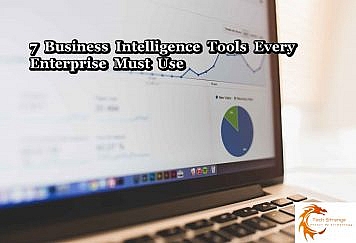Whether a business can manage and optimize its business processes remains one of the most important factors determining its success. Yet, it is often easier said than done to manage a business process appropriately. This is where Business Process Management (BPM) comes in.
However, many businesses, especially smaller ones, tend to think that BPM isn’t a worthy investment, while in truth, BPM is crucial no matter what industry you are in and what size your business is.
What is BPM? How can you implement BPM in your existing organization? Is the benefit worth it?
In this definitive guide to Business Process Management, we’ll answer those questions (and more) and learn about how to effectively manage and optimize your business processes to be as efficient as possible.
What Actually Is Business Process Management?
As the name suggests, Business Process Management (BPM) is about the effort of managing and optimizing a business process (or business processes).
We can define a “business process” as a set of sequential tasks that processes and transforms raw data or information into a processed form to achieve a specific business objective.
We call it a “process” if the steps are repeatable and predictable, or else it can either be a “project” (typically a one-off sequence of steps that are non-repeatable) or a “case” (where the steps are unpredictable according to the user’s input).
For example, if it’s a smartphone factory:
- Manufacturing the flagship smartphone product is a business process; it is repeatable and predictable. As long as the same raw materials are used, the end product will be the same.
- Designing a new smartphone model is a project. It is one-off and non-repeatable once the project is finished.
- Handing a customer’s complaint via a technical support ticket is a case. The exact steps are unpredictable depending on the customer’s case on hand.
Business Process Management primarily focuses on managing and optimizing processes to be as efficient and effective as possible. However, it can also expand to optimizing projects and cases, as they’ll also affect the organization’s overall efficiency.
Why Is Business Process Management Important?
Simply put, all business processes are inefficient, and it’s impossible to reach 100% efficiency. However, when left unmanaged, the inefficiencies of the business processes can grow worse to be uncontrollable, leading to various issues like:
- Wasting time and resources leading to missed deadlines and bottlenecks
- More errors, failure to stay compliant with regulations
- Internal conflicts as workers start blaming each other for the team’s failure
- Lack of information on how to fix the efficiency problem
- Demoralizing the organization as a whole
It is essential to ensure that all business processes are as efficient as possible.
If you plan to automate your business processes, it’s also important to consider that automation will be counterproductive without BPM to ensure efficiency. Automating an inefficient process will only amplify its inefficiencies.
How To Implement Business Process Management
While the actual process of implementing BPM may vary depending on the workflow or business process itself and many different factors, BPM can be implemented in five basic steps:
Step 1: Design
If your business has more than one business process, the first step is to pick one of the processes to introduce BPM. While ideally, you should optimize all processes, it’s best to start and focus on one process at first.
Which process should you choose? You can use one of the three basic approaches:
-
- Strategic: picking the business process that is most crucial for your business operation, that when optimized, can significantly improve efficiency.
- Reactive: Pick a visibly inefficient process with clear bottlenecks so you can fix the issue ASAP.
- Customer-centric: picking a business process that will improve customer satisfaction the most, for example, improving queue time.
Once you’ve picked a process, the next step is to design the business process map by listing the steps required to execute this process. We can do this by interviewing stakeholders that are directly involved with the process.
Step 2: Model
Once we’ve gathered enough data about the process, the next step is to visualize the process in a workflow diagram. We can do this with just a pen and paper, but we can also use a BPM solution like Aproove with its built-in business process mapping tool.
Focus on modeling and accurate as-is workflow map for the process (meaning, mapping the process as it is executed at the moment, and not the definitive version we’d like the process to be in the future).
Add as many details as possible, including roles of those involved in the process, deadlines, and conditions/requirements, to ensure everyone who views the workflow map can clearly understand the sequence of steps and the flow of material/information throughout the process.
Step 3: Finalizing The Map
Finalize the map, and test the process live according to the workflow map. Involve a small group of stakeholders first in the test, then open the test to all users. Restrict access to confidential information as needed.
Adjust the workflow map based on the results of the tests until it’s as accurate as possible.
Step 4: Workflow Analysis
Monitor the process as it is executed according to the workflow map, and analyze the workflow map to:
- Track progress against goals by using the right metrics
- Measure the overall efficiency of the process
- Identify bottlenecks and redundancies
- Identify steps that can be substituted or eliminated to improve efficiency
Based on this analysis, we can develop an improvement plan.
Step 5: Optimization
Based on the improvement plan resulting from the analysis, we can implement changes to the business process. Monitor the improvements by involving stakeholders to see whether there are indeed positive changes from the initial process. If not, restart step 4.
Remember that BPM is not a one-off process but rather a continuous one.
Closing Thoughts
Implementing BPM in your business can help you control chaotic and complex business processes by mapping, analyzing, and optimizing operations.
As a result, BPM can help you run day-to-day operations more efficiently to more effectively achieve organizational goals by using fewer resources.
Follow TechStrange for more Technology, Business, and Digital Marketing News.





